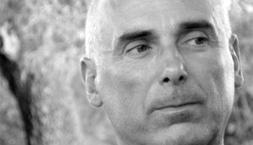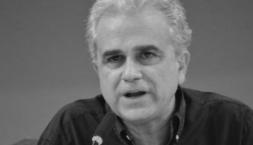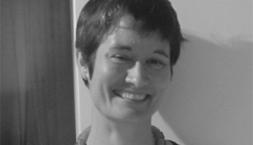Professor in Residence, Department of Architecture, GSD, Harvard University, Cambridge MA, USA
The timing of a research journal is obviously quite different from the rapid pace of events occurring in society. Therefore, a brief preamble is needed before presenting the contents of this issue, which started to be built up several months ago, thus before the eruption of recent, global events.
Two major issues, exploded with virulence way after we started to build this issue, are currently jolting our societal structure and public discourse: the COVID-19 pandemic and people’s outrage for recurring and ever more disturbing manifestations of racism across cultures. If we think it through, beyond emotional reactions, more related than we may be brought to believe at first.
As a journal, we have already committed to deal with the former through our call for submissions for the next themed issue of Fall 2020; for the other issue, we encourage contributions at any time, to be posted as they become ready, and definitely for the open issue of Spring 2021 – we will consider also a call for a themed issue in the near future. Regardless, The Plan Journal, together with the whole The Plan Group and our publisher Gruppo Maggioli, joins many organizations and platforms of public debate across the world in standing up against any form of racism or discrimination, evident or hidden, declared or hypocritically denied, while supporting and promoting any form of appreciation of diversity in society and culture.
Discussing diversity, which we, as TPJ already focused on in our last 2019 themed issue on “Gender Matters,” is also talking about the “other.” And the “otherness” of architecture seems to remain a preoccupation, as attested by this issue, of fellow scholars, researchers and critical practitioners around the world. Whether through cross-disciplinary studies, such as with photography (Dähnick) or neuroscience (Brancaccio et al.), or through politics (Eversole), or through sustainability challenges, such as planning in aridlands (Cooper), dealing with waste (De Almeida) or devising strategies for post-disaster remediation efforts (Lopez & Hooper), a fruitful dialog with the “other” and its operational inclusion within practices in our field seem to suggest new interesting lines of inquiry. Even through discussing issues closer to the core of the practice, such as the relationships between modern paradigms and the westernization of the Americas (Lara), a re-functionalization of the CIAM Grid (Croset & Canclini), or the effecting in architecture and urban design of a notion of “boredom” borrowed from culture and critical theory (Mihalache), there seems to be a wide range of still unexplored theoretical perspectives triggered by shifting the point of view at the limit of our field. It is also fitting that we include the necessary testing ground of an actual architectural project (Bertani & Vezzali) where reflections on these and other themes are brought to bear for the ultimate verification of our art.
What is interesting to note is also the timeliness of an on-going reflection on the meaning and the expression of modernity. While percolating in various ways through all contributions, this is most evident through the stunning photos by Arina Dähnick, the intriguing elaborations by Fernando Lara and the provocative overhaul of a tool/paradigm (the CIAM Grid), that seemed relegated to the documents of history, by Pierre Alain Croset and Andrea Canclini. But also through the thoughtful critical review by Raffaella Neri of an important contribution, such as Diane Ghirardo’s most recent excellent work, to better understand Aldo Rossi’s legacy beyond superficial historiographic categorizations and schematisms. And definitely through the call for more in-depth studies into Giancarlo De Carlo’s complex oeuvre, as it emerged from the 2019 IUAV symposium in Venice, well outlined by Sara Marini and Marco Pogacnik.
Encouraging and disseminating in-depth critical reflections and studies are at the core of our journal’s mission and in doing so we hope to counter certain recognizable trends for superficial or biased analyses, whatever the ideology or the cultural agenda is behind them. That is why, for example, in my view, Dähnick’s penetrating eye, behind her Leica lenses, is able to capture more of Mies’ works, with the non-architectural sensibility of a photographer, than superficial and biased critiques of modern architecture by contemporary critics and architects, such as the now (in)famous Herzog and de Meuron’s reading of the Farnsworth House, portrayed as a case-study of “treacherous transparencies.” 1 It has been well noted how, supported by Pierre de Meuron’s “unflattering photos” 2 (thus betraying, in my view, a preconceived bias), Jacques Herzog wove a surprisingly superficial critique of the house’s transparencies around “the unforeseen treacheries of heat gain, caustic reflectivity, and the impossibility of interior privacy.” 3 Instead, the atmospheres of the Farnsworth House, and of other works by Mies for that matter, as beautifully rendered through Dähnick’s sublime shots, are faithful, because coherent (thus, far from being treacherous), metaphors of the modern spirit. Those atmospheres are able to intrigue us once again and to inspire us to continue our quest for the meaning and the expression of modernity in our own time. A time when, more than ever, we need to cling to the modern promise of freedom, justice, emancipation and the power of a rational discourse within our public sphere.
Jacques Herzog and Pierre de Meuron, Treacherous Transparencies: Thoughts and Observations Triggered by a Visit to the Farnsworth House (Barcelona: Actar, June 2016).
Fred A. Bernstein, book review of Herzog and de Meuron, Treacherous Transparencies (2016), Architectural Record (November 1, 2016) - https://www.architecturalrecord.com/articles/11961-treacherous-transpare....
Curtis Roth, book review of Herzog and de Meuron, Treacherous Transparencies (2016), Journal of Architectural Education – Online (May 17, 2017) - http://www.jaeonline.org/articles/review/treacherous-transparencies-thou....
















